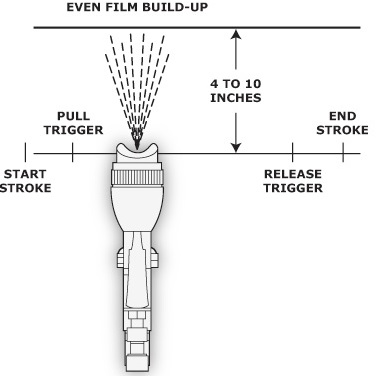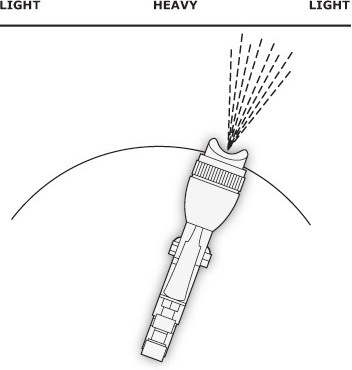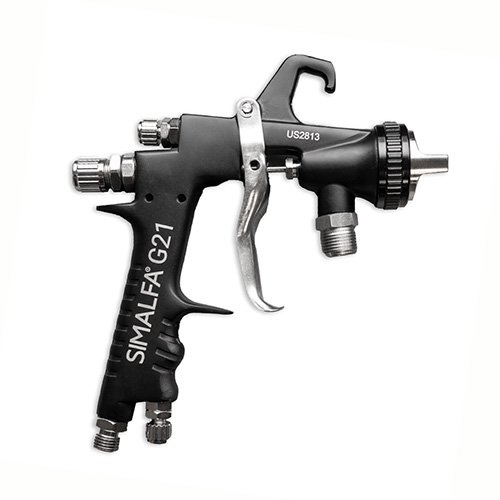Better Manual Spraying
Guide
Despite the ongoing interest in automation, manual spraying is still the most used and remains a very effective method for applying Simalfa. Providing the system is installed correctly, spray guns are set properly, and operators use proven techniques, clients can benefit greatly.
Follow the recommendation below to optimize the manual spraying of Simalfa.
Good Technique

Poor Technique

Installation + Maintenance
- Install an air regulator for each spray gun
- Install air regulators out of the sprayers' reach.
- Replace damaged parts of the spray gun.
- Inspect air hoses and air connections regularly. A 1/4" air leak can cost thousands per year in electricity alone.
- Clean and maintain the spray gun according to the manufacturers' recommendations.
Spray Gun Settings
- Minimize fluid volume coming from the spray gun.
- Control atomization air pressure in relation to adhesive volume.
- Match the spray gun and settings (nozzle, needle, air cap) with the adhesive. Failure to choose the correct equipment generally results in lower efficiencies and increased adhesive costs through waste and overspray.
Sprayer / User
- Increase spray gun transfer efficiency or product yield by implementing more consistent spraying techniques.
- Maintain the proper spraying distance and angle from the substrate.
- Download the above documents and post in the spray area for reference.
